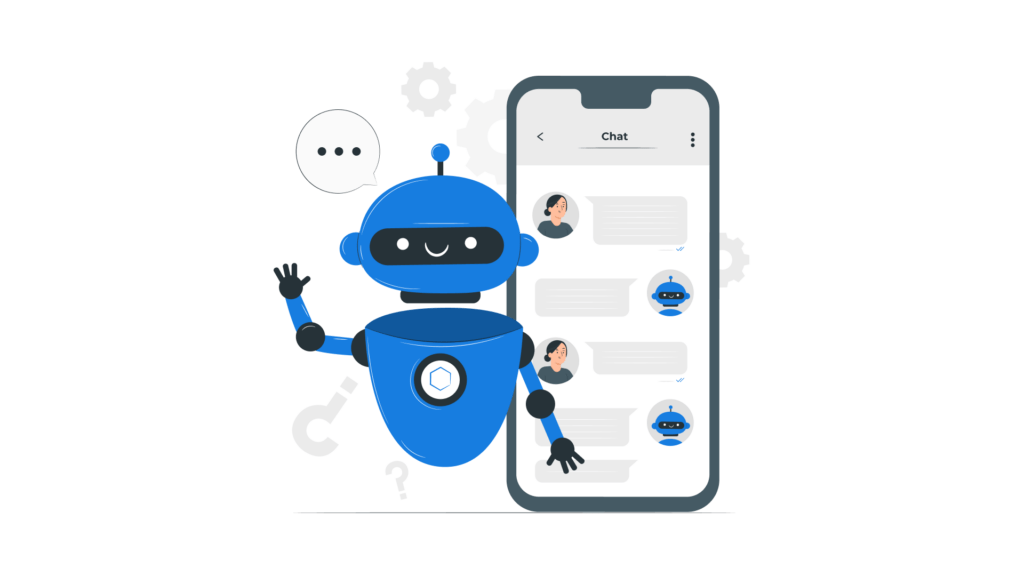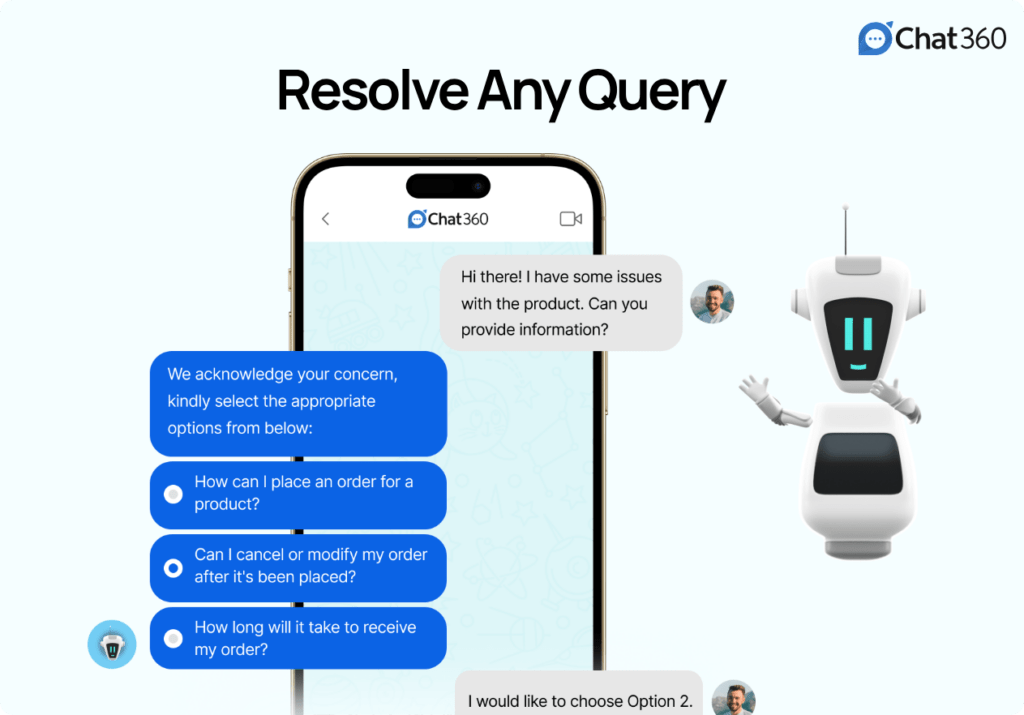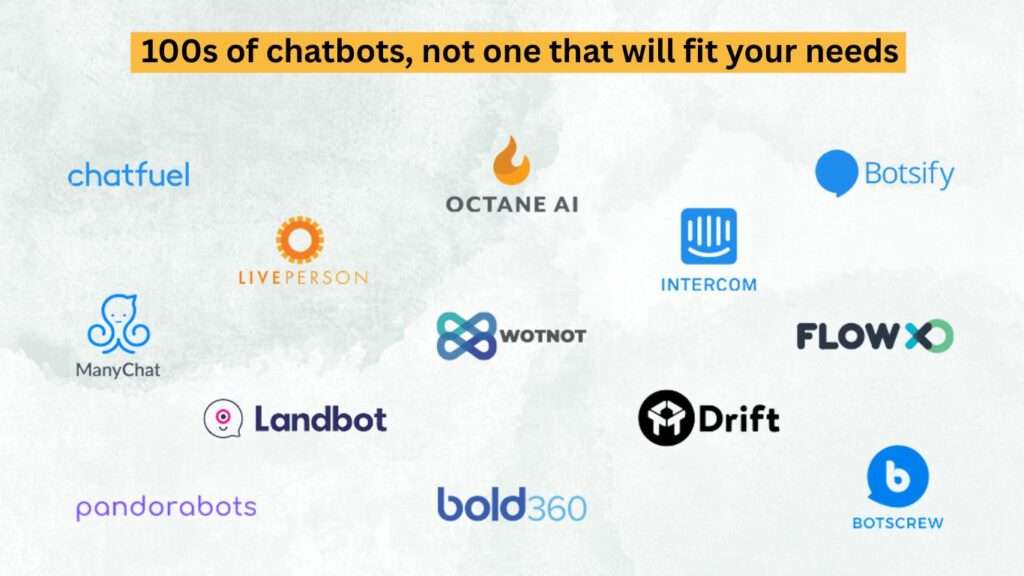Say goodbye to FAQ confusion with AI chatbots simplifying everyday questions for seamless customer experiences.

In the ever-evolving landscape of customer service and engagement, AI-based chatbots have emerged as invaluable tools, especially when it comes to handling Frequently Asked Questions (FAQs). These intelligent bots not only streamline the customer support process but also enhance user satisfaction by providing quick and accurate responses. This comprehensive guide will navigate you through the intricacies of creating and effectively utilizing an AI-based chatbot for answering FAQs, empowering your business to deliver seamless customer experiences.
1. Understanding the Need for AI Chatbots in FAQs
In this section, we delve into the challenges businesses face in managing a high volume of FAQs manually. The guide emphasizes the pivotal role of AI-based chatbots in addressing these challenges, offering 24/7 support, and ensuring consistent and precise responses.
In the digital age, where customer expectations are soaring, businesses encounter a multitude of FAQs across various touchpoints. Manually managing this influx can lead to delays, inconsistencies, and frustrated customers. Here, AI-based chatbots step in as dynamic problem-solvers, capable of handling repetitive queries with speed and accuracy.
By providing round-the-clock support, these chatbots cater to a global audience, irrespective of time zones. This not only enhances customer satisfaction but also positions your business as responsive and customer-centric. The chapter delves into real-world scenarios where the absence of AI-based chatbots resulted in customer dissatisfaction and how integrating them transformed the customer support landscape.
2. Laying the Foundation: Key Components of an AI Chatbot
A successful chatbot requires a robust foundation. We explore the essential components, including Natural Language Processing (NLP), Machine Learning (ML), and Decision Trees. This chapter provides a beginner-friendly understanding of the technology that powers effective chatbots.
Natural Language Processing (NLP) acts as the brain behind the chatbot, enabling it to comprehend and respond to user queries in a way that mimics human interaction. Machine Learning (ML) allows the chatbot to learn from data and improve its responses over time, ensuring a constantly evolving and adaptive system. Decision Trees facilitate the logical flow of conversation, mapping out the chatbot’s responses based on user inputs.
Understanding these components equips businesses with the knowledge needed to make informed decisions during the development and customization of their AI-chatbots. The chapter also highlights successful implementations and the impact these components have on enhancing the user experience.
3. Choosing the Right Platform for Your Chatbot
Navigating the myriad of platforms available for chatbot development can be overwhelming. Here, we break down the pros and cons of popular platforms, ensuring you make an informed decision based on your business needs and technical expertise.
Choosing the right platform is crucial for the seamless integration and performance of your AI chatbot. We delve into popular platforms like Dialogflow, Microsoft Azure, and IBM Watson, providing insights into their strengths and weaknesses. Considerations such as ease of use, scalability, and integration capabilities are explored to guide businesses in selecting the platform that aligns with their objectives.
Real-world case studies showcase businesses that successfully adopted specific platforms, offering practical insights into platform selection. By the end of this chapter, businesses gain clarity on the platform that best suits their requirements, setting the stage for a successful chatbot deployment.
4. Designing Conversational Flows for Optimal User Experience
Crafting engaging and intuitive conversations is an art. This chapter guides you through the process of designing conversational flows that align with user expectations, ensuring a positive and frictionless interaction with your chatbot.
The success of an AI-based chatbot hinges on its ability to engage users effectively. We explore the principles of user-centric design, emphasizing clarity, simplicity, and personalization. Case studies from various industries illustrate how well-designed conversational flows contribute to user satisfaction and retention.
Understanding user intent and crafting responses that resonate with your brand’s tone is crucial. The chapter provides practical tips on creating dynamic conversational flows that adapt to user inputs and foster a natural and enjoyable interaction. By mastering the art of conversation design, businesses can elevate their chatbot’s usability and impact.
5. Developing Your AI Chatbot
For the hands-on enthusiasts, this step-by-step tutorial walks you through the actual development process. From setting up the necessary tools to coding the chatbot logic, this chapter ensures you have a functional AI chatbot by the end.
Embarking on the journey of developing an AI chatbot requires a systematic approach. The tutorial breaks down the development process into manageable steps, catering to both novice and experienced developers. Practical demonstrations, code snippets, and interactive exercises guide readers through each stage, fostering a hands-on learning experience.
The tutorial covers crucial aspects such as data preparation, model training, and integration with chosen platforms. By the end of this chapter, businesses gain a practical understanding of the development process, empowering them to customize and optimize their chatbot according to specific requirements.
6. Integrating AI with Human Touch
While AI chatbots excel in handling routine queries, there’s immense value in preserving the human touch for complex or sensitive matters. This chapter explores the hybrid approach, where AI seamlessly collaborates with human agents for a comprehensive customer support strategy.
In scenarios where empathy, emotional intelligence, or intricate problem-solving is required, the human touch remains irreplaceable. This chapter guides businesses in striking the right balance between AI-driven automation and human intervention. Real-world examples showcase the successful implementation of the hybrid approach, emphasizing the complementary nature of AI and human agents.
Strategies for effective collaboration, seamless handovers, and continuous feedback loops are discussed. Businesses learn how to leverage the strengths of both AI and human agents, providing customers with a holistic and personalized support experience.

7. Fine-Tuning Your Chatbot for Continuous Improvement
The journey doesn’t end with deployment. This chapter discusses the importance of continuous improvement, covering techniques like user feedback analysis and data-driven optimizations. It ensures your chatbot evolves with changing customer needs.
A deployed chatbot is a dynamic entity that requires ongoing refinement. User feedback serves as a valuable resource for identifying areas of improvement and addressing user pain points. The chapter explores methods for collecting, analyzing, and incorporating user feedback into the chatbot’s development cycle.
Data-driven optimizations, including performance monitoring, A/B testing, and iterative model updates, are essential for ensuring the chatbot remains relevant and effective. Real-time analytics tools and key performance indicators (KPIs) are introduced to measure and enhance the chatbot’s impact over time.
8. Overcoming Challenges and Pitfalls
Implementing AI chatbots comes with its set of challenges. This chapter prepares you for potential pitfalls and equips you with strategies to overcome them, ensuring a smooth and resilient chatbot deployment.
From technical challenges such as integration issues and scalability concerns to user acceptance and ethical considerations, businesses are guided through proactive approaches to mitigate risks. Case studies showcase instances where challenges were successfully navigated, providing valuable insights for businesses preparing to deploy their AI chatbots.
Addressing challenges related to user trust, privacy, and security is emphasized, fostering a proactive and transparent approach to chatbot deployment. By anticipating and strategizing around potential pitfalls, businesses can enhance the likelihood of a successful implementation.
9. Real-world Success Stories
Drawing inspiration from real-world examples, this chapter showcases businesses that have successfully implemented AI-based chatbots for FAQs. These success stories highlight the diverse applications and positive impacts on customer service.

Businesses across industries have embraced AI-based chatbots, achieving remarkable results in customer satisfaction, operational efficiency, and cost savings. Case studies feature businesses in e-commerce, healthcare, finance, and more, illustrating the versatility and effectiveness of AI chatbots.
Readers gain insights into the strategic considerations, challenges faced, and outcomes achieved by these businesses. The chapter inspires businesses to envision the potential impact of AI-based chatbots within their unique contexts, fostering creativity and innovation.
10. The Future of AI Chatbots
The guide concludes with a gaze into the future, exploring emerging trends and innovations in AI-based chatbots. From voice-enabled interactions to increased personalization, this chapter prepares you for what lies ahead.
The landscape of AI-based chatbots is ever-evolving, and businesses need to stay ahead of the curve. This chapter provides a glimpse into upcoming trends, including voice-based interactions, enhanced personalization through AI, and integration with emerging technologies like augmented reality (AR) and virtual reality (VR).
Understanding the future trajectory enables businesses to plan for scalability, adaptability, and continued innovation. By embracing emerging trends, businesses can future-proof their AI chatbot strategies and stay at the forefront of customer service excellence.
Conclusion:
As businesses embrace the transformative power of AI chatbots in answering FAQs, the need for a comprehensive guide becomes paramount. This guide serves as a compass, navigating you through the entire process – from understanding the basics to implementing advanced strategies. By the end, you’ll not only have a functional AI chatbot but also the knowledge to adapt and thrive in the dynamic landscape of customer support.
Elevate your customer service game and unlock efficiency with an AI chatbot tailored to answer FAQs seamlessly. Embrace the future of customer engagement with the perfect blend of technology and human touch.




